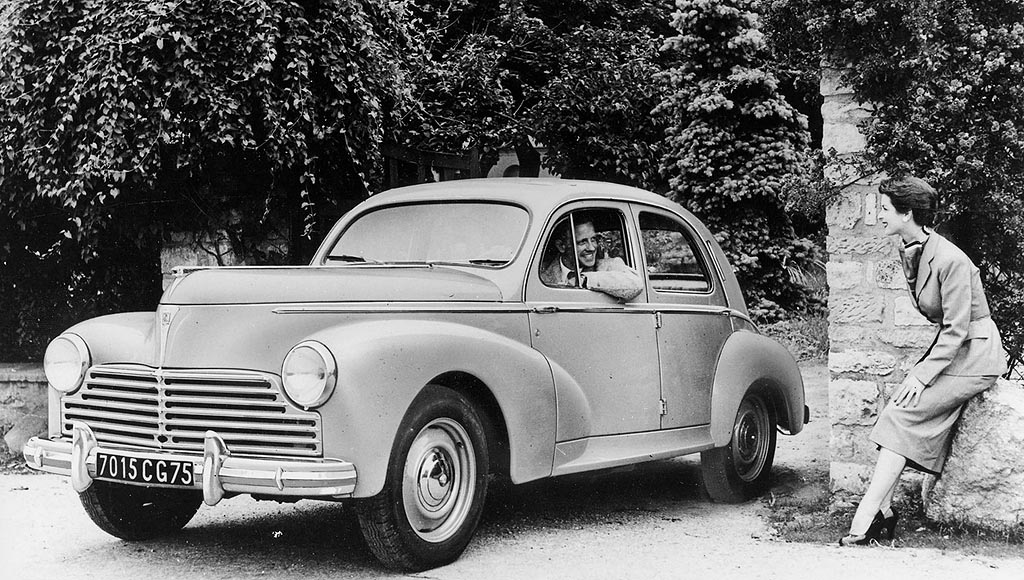Background on the Frégate is here. It seems that Renault was working on a rear-motor car larger than the 4CV, but the project was wisely abandoned and the conventional Frégate was initiated in 1949. That meant Renault stylists were aware of the post-war 1948 Oldsmobile, 1949 Chevrolet and Chrysler line fender designs, and created their version.
The result was a bland, 1949-vintage design that was slightly behind the times when the first production models were announced for the 1952 model year. Even so, the Frégate's styling was more advanced than the competing Peugeot 203 that I wrote about here. But it was only on par with Ford SAF's Vedette that debuted in the spring of 1950 and which made use of the 1949 Mercury's design theme.
These are publicity photos of 1951 pre-production Frégates. The most noticeable differences from 1952 models are the shape of the bumpers and grille bar details. Both of these images came from the same photo shoot: note the windows in the background.
The Frégate as seen from on high. Again, the same car in both images. I like the long hood, though front overhang is a bit long for its era, but common in modern front-drive times. Frégate's layout was conventional front-engine, rear drive.
Another publicity photo of a 1952 Frégate. The negative aspect of the long hood is a passenger compartment that seems a bit cramped despite Renault's claim that six passengers could be accommodated (see previous image).
For 1955, Frégate added the Amiral line shown here. The grille was redesigned and a chromed stone guard was added to the rear fender.
The American baroque two-tone paint scheme disease struck the Frégate by 1958. Yet another What Were They Thinking? moment.



















































